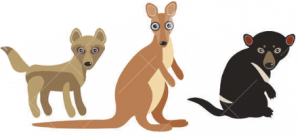 Nick Milano will be giving an Expanding Horizons lecture sponsored by VIDA. He will be making Australian lamingtons. RSVP here
Nick Milano will be giving an Expanding Horizons lecture sponsored by VIDA. He will be making Australian lamingtons. RSVP here
When: Thursday, February 1, 6-7pm
Where: Classroom 7, the vet school
 Nick Milano will be giving an Expanding Horizons lecture sponsored by VIDA. He will be making Australian lamingtons. RSVP here
Nick Milano will be giving an Expanding Horizons lecture sponsored by VIDA. He will be making Australian lamingtons. RSVP here
When: Thursday, February 1, 6-7pm
Where: Classroom 7, the vet school
This past summer, I traveled to Indonesia as part of Engaged Cornell. Engaged Cornell is a program that pairs together a graduate veterinary student and an undergraduate student for a summer research project. The program provided funding for four pairs of students to travel to Indonesia, the Congo, and Uganda. As part of team Indonesia, I also took a semester long intensive language course as well as a Conservation in Communities elective course.
My team went to East Kalimantan, the Indonesian province in Borneo. We were partnered with ALeRT (Aliansi Lestari Rimba Terpadu – The Alliance of Integrated Forest Conservation), a non-profit organization founded in 2009 by Dr. Marcellus Adi. ALeRT aims to protect the nature of Way Kambas National Park and encourage community development for sustainable living. In March 2017, ALeRT established a new office in Borneo to conduct disease surveillance and occupancy surveys of the Sumatran Rhinoceros found in East Kalimantan, in conjunction with WWF. The Sumatran Rhino is critically endangered, and was thought to be extinct in Borneo until it resurfaced between 2010-2013. There are an estimated 1-5 rhinos left in the region, and with continued habitat loss, the risk of death of these animals is high. WWF has been working in the region for a couple of years now, and plans to do a translocation of the rhino in the wild to the protected Kelian Forest. However, before the translocation can take place, a thorough evaluation of diseases in the current habitat and the protected forest is necessary to ensure that immunologically naïve rhinos are not exposed to new diseases in the protected Kelian Forest during the translocation.
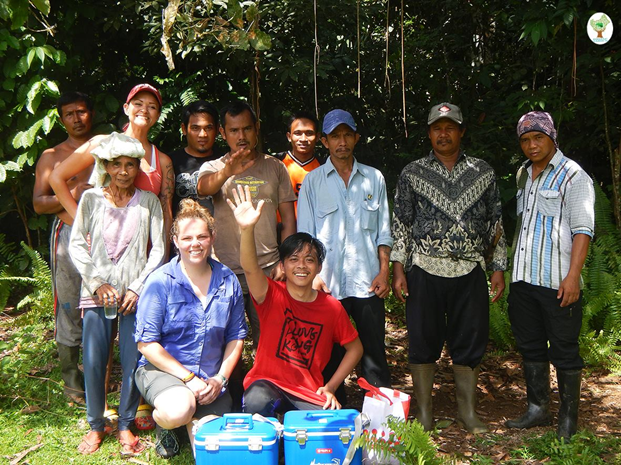
We worked closely Dr. Aldino Yanuar, the ALeRT veterinarian at the field site in East Kalimantan. Our goal was to document the prevalence of gastrointestinal parasites and trypanosomes in cattle living in areas surrounding the potential habitat of the Sumatran rhinos. Because of the risk of cross-species transmission, establishing disease prevalence in cattle helps us to assess the risk to the rhinos. Since the ALeRT office was recently established, part of our job was to help Dr. Yanuar set up a small lab and help prepare sample collection protocol.
We spent a week at a time in remote villages that bordered the proposed habitat. Our partners had already begun choosing villages by sending members of the Social team to speak to villagers about whether they had seen any rhinos. Often, we didn’t have any prior information about how many cattle were found in each village. Some villages had just a few cattle, while others still maintained an abandoned government breeding program, and one village only kept swine. Because of this, it wasn’t always possible to anticipate what the day’s sample collection would be like.
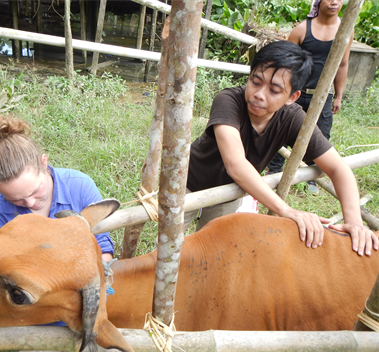 We built temporary stalls using wood cut down and plastic wrap, or whatever else was on hand. Many of the cattle were not used to handling, so collecting samples and administering vitamins required a lot of patience. In one set of villages, each temporary stall resulted in cows jumping over or under the sides to escape. I was completely out of my element when one village did not have any cattle, but did have swine. I had utilize what little I had learned in my curriculum about swine to collect the samples we needed. I made a lot of mistakes, but I learned a lot about myself, as well. At times, you must use what you have. If you run out of gloves, you do what you must do to get the samples. Often the roads were almost impassable, taking hours toget from one village to the next. There was seldom cell service or electricity. Our curriculum gives us a base on which to build our experiences, but the rest, the creative problem-solving, is up to us. I also had to face the reality that, in Borneo as in many other places in the world, animal welfare regulations are not as strict as they are in the United States. The pigs are kept in small wooded enclosures 5 feet above the ground, because of the flooding, and are fed one to two times daily. Often the pigs did not even have access to water. Many animals are kept alive long periods of time when they should be culled, because cows are thought of as a symbol of wealth and are saved for ceremonies such as weddings and funerals.
We built temporary stalls using wood cut down and plastic wrap, or whatever else was on hand. Many of the cattle were not used to handling, so collecting samples and administering vitamins required a lot of patience. In one set of villages, each temporary stall resulted in cows jumping over or under the sides to escape. I was completely out of my element when one village did not have any cattle, but did have swine. I had utilize what little I had learned in my curriculum about swine to collect the samples we needed. I made a lot of mistakes, but I learned a lot about myself, as well. At times, you must use what you have. If you run out of gloves, you do what you must do to get the samples. Often the roads were almost impassable, taking hours toget from one village to the next. There was seldom cell service or electricity. Our curriculum gives us a base on which to build our experiences, but the rest, the creative problem-solving, is up to us. I also had to face the reality that, in Borneo as in many other places in the world, animal welfare regulations are not as strict as they are in the United States. The pigs are kept in small wooded enclosures 5 feet above the ground, because of the flooding, and are fed one to two times daily. Often the pigs did not even have access to water. Many animals are kept alive long periods of time when they should be culled, because cows are thought of as a symbol of wealth and are saved for ceremonies such as weddings and funerals.
While in the area, we attended a traditional Dayak Funeral ceremony for a woman who had passed away in her sleep just days before we arrived. We ate with her family, and then watched them make the first sacrifice to help the dead cross into the afterlife. The sacrificial cow was used for meat over the following days. The second and final sacrifice, 7 days after her death, involved tying a water buffalo to a carved tree in the center of the field and releasing the water buffalo as men in two teams surrounded it. Every drop of blood spilled was a step closer to the afterlife, so the men in teams had knives and would stab the water buffalo as it attempted to get away. We watched as this part of the ceremony took place. Before the life of the water buffalo could be ended, a fight broke out between the two teams, so we were whisked away. This funeral ceremony is quite rare, and it was extremely difficult to see. We learn in class about behaviors exhibited by animals when they fear for their lives, and this water buffalo was terrified. We talk about animal welfare, and the USDA would by no means approve of this ceremony. However, it is part of the Dayak Tribe’s culture, deeply rooted in their history and spiritual beliefs – and who was I to say that this ceremony was wrong? Without understanding, we lose pieces of human history and diversity.
At each village we visited, I was astonished by the villagers’ kindness and willingness to share – gifts, food, and knowledge. The quote “Sometimes, those who give the most are the ones with the least to share” came to mind quite often. In one village, they started up the generator for us each night, and when we ran out of water to bathe in, rushed to the river to get us more water. I was gifted a handmade Dayak purse by one woman after spending the evening teaching English to the kids in the village. These amazing people had so little to give, and yet gave so much. At one point a farmer asked us, “why do doctors only come to check the animals and not us?” This statement still haunts me. The healthcare system in Indonesia is riddled with corruption. Much of the money is invested in Java and Jakarta for the roads. Though this is changing for the people in East Kalimantan, I wonder if it is changing fast enough. And as the needs of people continue to increase, it only means that the forest will get smaller. Many people still rely on the forest. Some villagers see the forest as an endless possibility. Other are afraid of the creatures it holds, and still others are unconcerned about the forest, because it is palm oil and rubber that provide for their families. Conservation of animals is so closely intertwined with the people surrounding these flagship species like the rhinoceros. I remember riding the motorcycle from one village to the next, seeing many people with guns going hunting. Even in the protected Kelian forest, there was evidence of people. A bearded pig had a distal limb amputation from a snare. We ate monitor lizard in a village close to the Kelian forest, after a villager offered us some of his prized meal. The question is, how can we really get people involved in protecting the forest and animals, while at the same time maintaining a sustainable economy?
To explain the relationship between America and Indonesia, you must understand the complex history between the two nations. Indonesia was originally a Dutch colony for hundreds of years. The Dutch established a caste system and controlled all portions of the government. In 1945, after a complex role in World War II and a period of Japanese occupation, Indonesia proclaimed its independence. America brokered the deal: for their independence, Indonesia would pay the Dutch what would be about 150 billion dollars today. The country was left poor, with its natural resources exploited. In the 1960s, communism began to take hold of Indonesia. At the height of the Cold War, the United States intervened, and the CIA effectively ran a shadow government. With the backing of the United States, Indonesian General Suharto took control, and murdered high-ranking members of the military, blaming it on communists. The subsequent anti-communist purge led to the genocide of 300,000-400,000 people. Indonesia continued to grow and develop economically, but Suharto’s administration was widely suspected of corruption. In 1998, Suharto resigned, and Indonesia became a democracy. In 2010, the net worth Indonesia’s vast oil and mineral reserves was over 95 billion dollars, yet the government only operated on 19 billion dollars that year. The remaining 66 billion dollars in revenue from Indonesia’s natural resources went to American, Australian and Singaporean companies.
So with this history of colonialization and even more recent neo-colonialism, what is our role as conservationists? That is a question I still struggle to answer. The clear majority of Americans will never know what it is like to grow up in a developing country. We might have preconceived notions about how easy it would be for someone to just stop poaching, or to build a better road. To just simply stop the hunting of prized animals such as elephants, even though it can provide some income to poor villages. To see an elephant in chains and proclaim that such treatment is inhumane. To judge someone who traps a pangolin, despite not even knowing the laws preventing it. To say that a farmer needs to provide his cows with more calcium, while the farmers must prioritize their children’s needs for the same mineral. Even as veterinarians, we are taught that when an animal presents with a problem, we fix that problem. Practice is rarely so simple. We will learn later in our careers how complicated that can be, based upon the client and their financial needs. We live a sheltered life in veterinary school, but programs like Engaged Cornell and Expanding Horizons give us glimpses of the “real world.” My experience taught me how the world really operates, and left me with more questions than answers when it comes to the realities of conservation, and how to implement change. Even now, words don’t do my experience and the people I met any justice.
Working with ALeRT helped me to see that my role, and maybe our roles, are not to march in as crusaders, to try to get people to stop what they have been doing for years. ALeRT was run entirely by Indonesians, and they employed people with connections to the Dayak tribe. Our role is to empower and educate people who can utilize that knowledge, along with their understanding of the culture, to make long lasting impacts for people, the rhinos, and the environment. I am proud and humbled to be a part of Engaged Cornell because it is a program that augments the work that Indonesians such as the illustrious Dr. Marcel Adi and Dr. Yanuar are doing to protect the environment.
Many of my questions remained unanswered, swirled in the reality that I am just one person. With clinical rotations looming in my immediate future, I feel the frustration of being faced with these questions and not being able to do much right now. However, I have learned that the integration of multidisciplinary roles is essential to effectively enact long-lasting change. I believe that One Health is going to change the world, but it will be a long and arduous road to creatively solve major issues facing the planet, and asking the right questions is just the beginning. One area I would like to see improve is the sharing of information. There was a lot of prior research conducted in Indonesia that I could not access without knowing some of the language. Speaking with the head of WWF Indonesia, I know he and other people are working hard to translate what they know, to make it available to people in English-speaking countries. Indonesian researchers would benefit from translations, as well. It is just a slow process, and many species don’t have that time.
For more information on neocolonialism in Indonesia, check out this article.
—-
ABOUT THE AUTHOR
Eden Stark is a third year veterinary student.
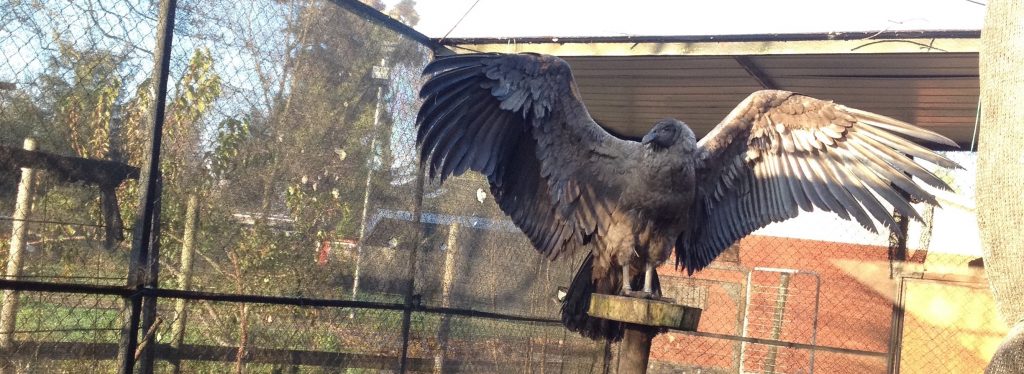
The Andean Condor (Vultur gryphus), is one of the largest flying birds in the world, with a wingspan of around 10 feet. This species is the national bird of Chile and has a near threatened conservation status since its population numbers have been in decline due to habitat loss, consuming contaminated carcasses, and hunting.
My name is Lauren Johnson, and I am a member of the Cornell University College of Veterinary Medicine class of 2020. This past summer, with support from Cornell’s Expanding Horizons program, I spent 10 weeks at the University of Concepción in Chillán, Chile. Chillán is a small city, 4 hours south of Santiago, with a traditional open-air market downtown and a picturesque countryside framed by views of mountain ranges and volcanoes. There, I worked with Chilean veterinarians to research milk quality at dairy farms in the region. While my main goal in Chile was to work with cows, I was excited to learn that the university had a wildlife clinic, since during the academic year at Cornell I work as a student technician at the Janet L. Swanson Wildlife Health Center.
The University of Concepción’s Center for the Rescue and Rehabilitation of Wildlife provides medical care and rehabilitation for native Chilean wildlife, with the end goal of releasing the animals back into the wild. The center is small, but has an indoor room with a few cages for patients and six large outdoor cages that allow birds of prey to fly and provide enough space for large mammals like foxes. Most animals are brought to the center by the Chilean government’s Agricultural and Livestock Service (which is also in charge of wildlife and conservation). The most common presenting complaint in patients is fractures due to vehicular trauma.
The center is mainly staffed by student volunteers. Each day, a team of a few students signs up to take care of the animals by preparing food, cleaning cages, and administering medications. Thanks to the coordinators of the center, I was able to join the Chilean vet students in taking care of the patients. This gave me a wonderful opportunity to meet some of Chile’s wildlife up-close. I cut up chicken necks for a Magellanic Horned Owl (Bubo magellanicus), a close relative of the Great-Horned Owl we often see at the Cornell wildlife clinic. I dug worms out of the ground for a Southern Lapwing (Vanellus chilensis), a shorebird that is commonly found on fields throughout the countryside and has a bright red spur on each wing used for fighting. I gave medication to an Austral Pygmy Owl (Glaucidium nana) about the size of my hand. I checked on the Andean Condor (Vultur gryphus), which is one of the largest flying birds in the world with a wingspan of around 10 feet. This species is the national bird of Chile and has a near threatened conservation status since its population numbers have been in decline due to habitat loss, consuming contaminated carcasses, and hunting. One of the most interesting patients was a young puma (Felis concolor) that had been hit by a car. Veterinarians performed surgery on the puma prior to my arrival in Chile, but I was able to assist in anesthesia monitoring for the re-check exam and radiographs to assess healing. After I left, the puma was moved to another rehabilitation center by Chile’s Agricultural and Livestock Service to be evaluated for release.
In January 2017, wildfires raged across central Chile, destroying hundreds of thousands of acres. The area burned was about the size of the state of Delaware, and many injured wildlife were brought to the University of Concepción clinic. In part due to the recognition of the importance of the center during this crisis, the Chilean Ministry of the Environment recently awarded it a grant to promote environmental education and develop its facilities. One of my favorite patients at the wildlife center was a pudú (Pudu puda). These are a miniature species of deer that attain a maximum height of 1.5 feet. Like the Andean Condor, they are currently designated as a near threatened species by the International Union for Conservation of Nature’s (IUCN) Red List. This individual was a victim of the wildfires, and due to burn injuries was determined to be non-releasable. The Chilean veterinary students working at the wildlife center were dedicated and hardworking, spending their free time on projects like rebuilding, improving, and enriching the animal cages, or planting trees nearby to provide a native food source for future pudú patients. I am excited to see what they will do with the award, and I hope that they continue to be recognized for their efforts.
ABOUT THE AUTHOR:
Lauren Johnson is a second-year veterinary student. She graduated from Wellesley College in 2016 with a double major in Biology and Spanish. She works as a student technician at the Janet L. Swanson Wildlife Health Center at Cornell.
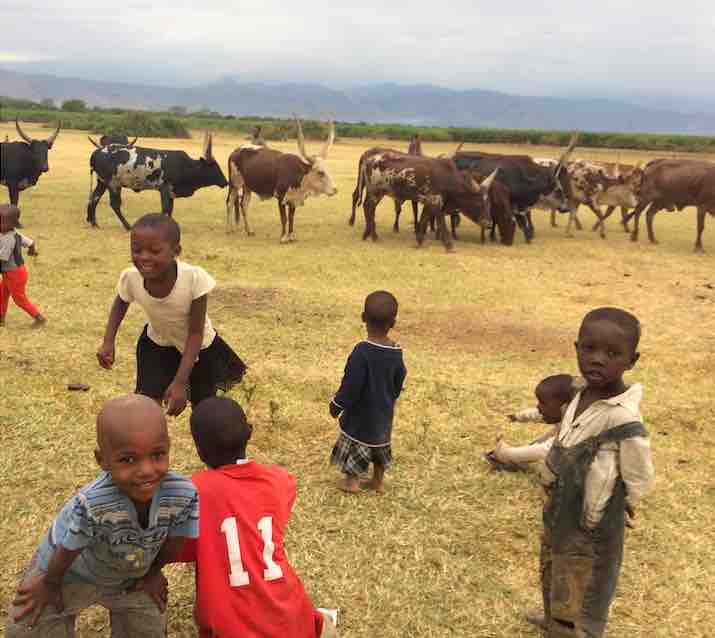 What: Megan Lee will be presenting on her experience working in Uganda through Expanding Horizons. She will be making Ugandan curried potatoes, beans, rice, and chicken stew. You can RSVP here.
What: Megan Lee will be presenting on her experience working in Uganda through Expanding Horizons. She will be making Ugandan curried potatoes, beans, rice, and chicken stew. You can RSVP here.
When: Thursday, November 2, 6-7pm
Where: S1-222 in the vet school
Come join VIDA in LH1 on Thursday October 12 from 6-7 for Elvina Yau’s Expanding Horizons Presentation:
Steps in the Right Direction: Elephant Welfare, Conservation, and Camp Management
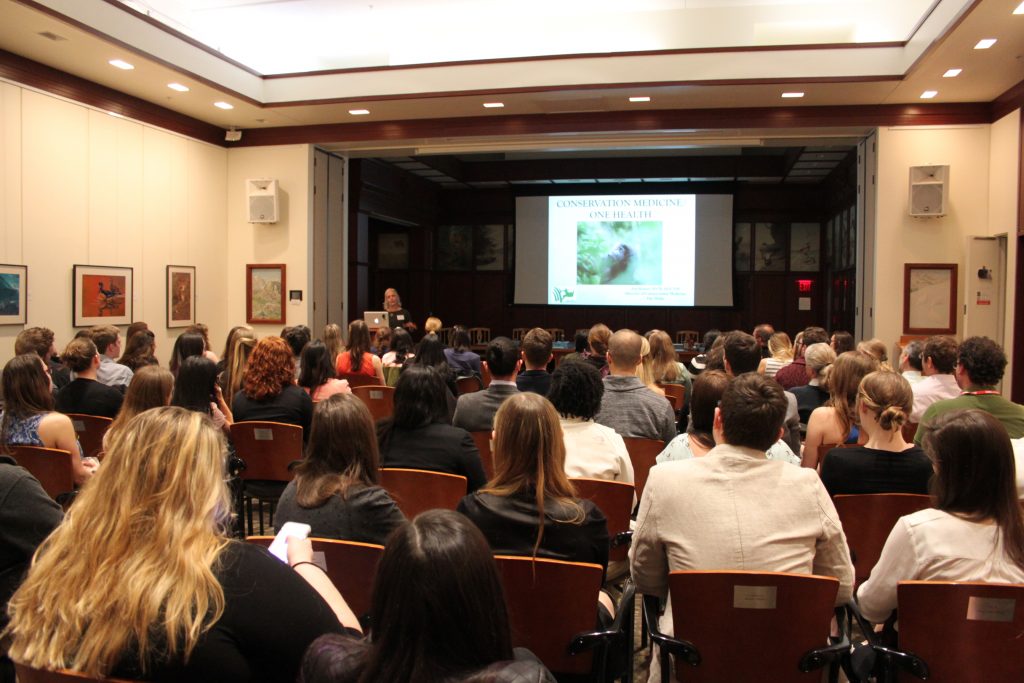
Dr. Jan Ramer giving her keynote lecture on her work with Gorilla Doctors, conservation medicine, and One Health.
Last week, Cornell University College of Veterinary Medicine hosted the biennial Special Species Symposium. Over 100 attendees, including veterinary students, veterinarians and vet school faculty, PhD students, and also members of the general public gathered at Cornell for a weekend of lectures and labs about the biology, medicine, and conservation of “special species.” This year’s theme was climate change, and its impact on animal biology, life history, and survival. The event concluded with a banquet at the Lab of Ornithology, a silent auction, and a talk by Dr. Jan Ramer.
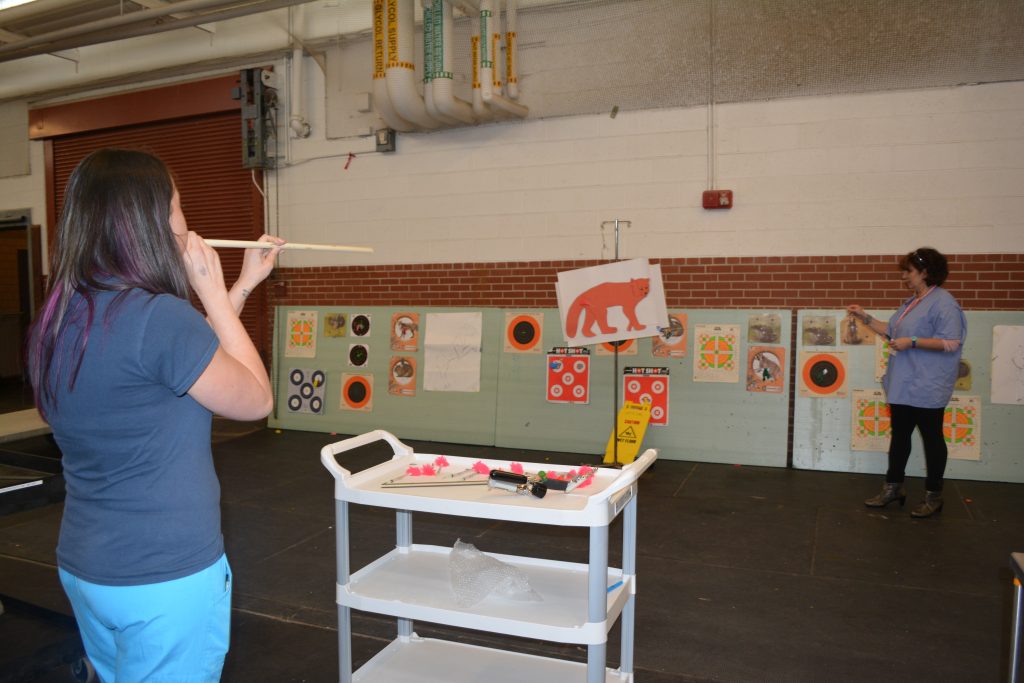
A veterinary student practices darting wildlife for sedation, with Dr. Noha Abou-Madi at the 2017 Special Species Symposium.
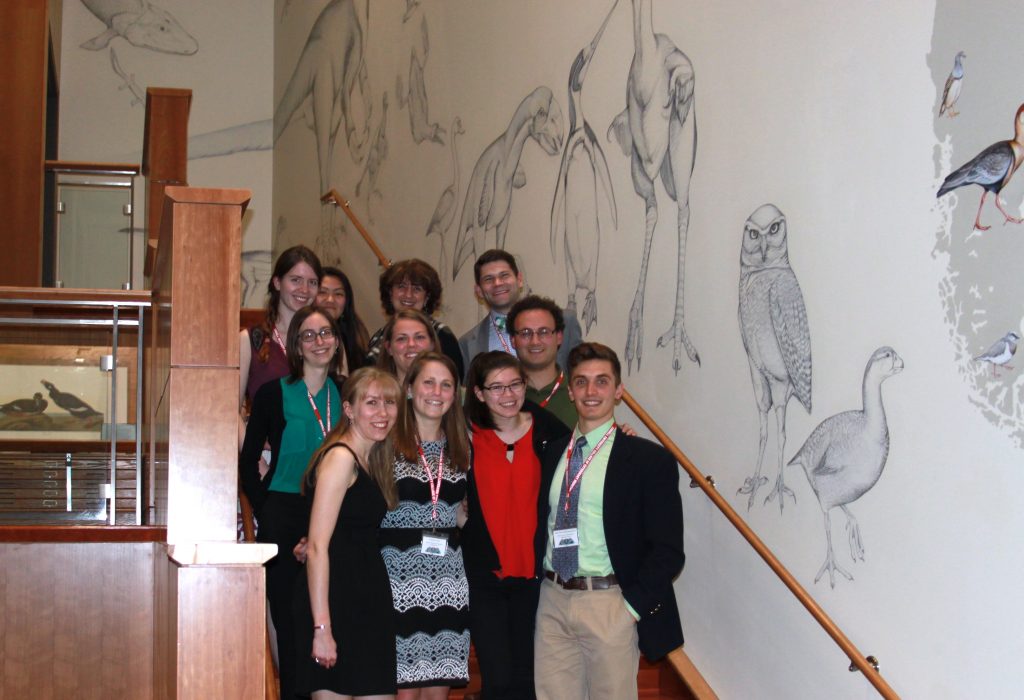
2017 Special Species Symposium organizers. Top row: Erika First, Angela Jin, Dr. Noha Abou-Madi, Will Fugina. Middle Row: Kayla Woodlock, Eden Stark, Jonah Zitsman. Front row: Caitlin Adams, Kristina Ceres, Isabel Jimenez, Zack Dvornicky-Raymond.
Below is a letter written by the 2017 Special Species Symposium Coordinator, DVM/PhD student Kristina Ceres, and Registration Chair Isabel Jimenez:
The Special Species Symposium began in 1991 as the “Zoo and Wildlife Symposium” at Cornell University. The leaders of the Cornell Zoo and Wildlife Society (ZAWS) felt there was a need to supplement the veterinary education with material related to wildlife and exotics so that graduates would be more prepared to work with those species. In second issue of the 1991 Veterinary Viewpoints newspaper, the then president of the Zoo and Wildlife Society, Dr. Karen Kearns ’93 said, “The symposium is our way of providing information that is taught in the veterinary medical curriculum. We also hope that interest in the symposium will show there is a need to increase the number of courses on wild and exotic animals offered in the curriculum”.
The SSS is a student-led and faculty-supported symposium, the goal of which is to supplement our veterinary curriculum and provide students from near and far with the opportunity to learn more about these amazing species. Since 1991, when Dr. Kearns planned the first Special Species Symposium, the Symposium has expanded into a yearly event in partnership with the University of Pennsylvania’s College of Veterinary Medicine. Over the past 26 years, our curriculum at Cornell University has also expanded to include varied coursework and opportunities to explore wildlife, zoo and exotic medicine within the school, hospital, Wildlife Health Center, Wildlife Health Initiative, and abroad through Expanding Horizons and Engaged Cornell.
We chose climate change for the theme for the 2017 Special Species Symposium because we recognize the need for veterinarians to play an important role in helping wildlife, domestic species and humans thrive in a warming climate. Climate change affects all living creatures on Earth; from changing habitats to changing disease transmission patterns, a warming climate provides important and difficult challenges for veterinarians to tackle for years to come. Although the term has become commonplace, climate change is causing very real changes to wildlife and wild spaces, and we want to shed light on what veterinarians and wildlife biologists are doing to intervene. We hope that as the years go on, the SSS will continue to inspire students to pursue careers that involve “special species” and help participants become climate conscious veterinarians.
This symposium would not have been possible without our sponsors, speakers, lab facilitators, volunteers, the previous coordinators of the Special Species Symposium at Cornell University and the University of Pennsylvania, the Cornell Zoo and Wildlife Society executive board, and our wonderful faculty mentor, Dr. Abou-Madi. Thank you for joining us this weekend to celebrate Earth Day, conservation, and a bright future for our planet.
Sincerely,
Kristina Ceres
2017 Special Species Symposium Coordinator
DVM/PhD Candidate, Cornell University
Isabel Jimenez
2017 Special Species Symposium Registration Chair
DVM Candidate Class of 2019, Cornell University
For Dr. Zachary Dvornicky-Raymond, a career in conservation may have been an inevitability. An animal lover for as long as he can remember, Dr. Dvornicky-Raymond recalls watching the Discovery Channel and Animal Planet as a child and idolizing Steve Irwin. “As I grew up and was attending zoos and learning more about the world, I came to realize that all of the animals that I loved and was so interested in were disappearing. So I always knew I wanted to figure out a way to help them.” While he was certain he wanted to work in wildlife conservation as a child, he wasn’t sure how. Dr. Dvornicky-Raymond notes that he always loved the sciences, especially biology, growing up. He then decided to go to college to pursue a major in biology, knowing that he would someday apply it to conservation. Through some formative experiences in undergrad, including a heartfelt discussion with our own Dr. Abou-Madi when he was a zookeeper intern, he learned that he could merge two major interests: medicine and conservation. His hard work paid off when he got a phone call one wintry morning from Dr. Beth Bunting — he had been offered a spot in Cornell Vet’s Class of 2019. To him, this was a dream come true; he accepted.
Dr. Dvornicky-Raymond is particularly grateful for the opportunity he had to develop his interests during his eight years at Cornell. In vet school, some of his favorite courses included Conservation Medicine, Captive Wildlife Management, and a wide range of large animal and production courses. He calls these domestic animal courses “just as important for your development as a zoological veterinarian” as more overtly zoo-related courses. Dr. Dvornicky-Raymond served as Vice President of the Zoo and Wildlife Society, during which time he co-developed the WildLIFE Blog. He was also Vice President of the Theriogenology Club during his time as a student and took on opportunities to continue developing his research skills, including an Expanding Horizons project in Namibia working with the Cheetah Conservation Fund. “We’re sitting on a gold mine at Cornell,” he says of the Expanding Horizons Program. “The opportunity to go abroad as a vet student and have agency in a project and work on something completely novel to you is an experience that is completely worth it, whether or not you want to work abroad.”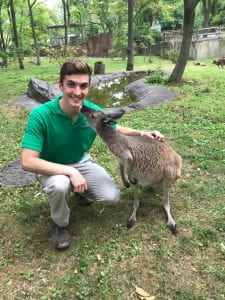
Zoo/wildlife-related experiences aside, Dr. Dvornicky-Raymond also emphasizes “leaning into things that aren’t necessarily just of professional interest, but that also speak to the heart.” This spirit of exploration should also, in his opinion, inform externship decisions. “Do something that you definitely want to do and do something somewhat related to it that you’re not sure about.” For Dr. Dvornicky-Raymond, this included an externship at a traditional zoological institution, the Brookfield Zoo, and a preceptorship at White Oak Conservation Center. Through these experiences, Dr. Dvornicky-Raymond came to love population medicine and the semi-free ranging wildlife model. Faculty also play an integral role in the self-discovery process. “Ultimately people are faculty at Cornell for a reason. They want to be there and they deserve to be there. You know they worked hard to get there and they want to help. They want to nurture.” Faculty at Cornell played an integral role in helping him choose his next steps after receiving his DVM. 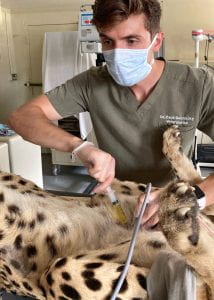
After graduation, Dr. Dvornicky-Raymond completed a small animal rotating internship at VCA West Los Angeles to “gain confidence and competence in my clinical skills.” He is quick to emphasize the many potential pathways to a career in conservation medicine, including internships in large animal and equine medicine. After completing his first internship, Dr. Dvornicky-Raymond went on to Colorado State University to complete a zoological medicine and surgery specialty internship, all while the pandemic was turning the veterinary community and the world at large upside down. “Learning how to extrapolate information and learning how to work in completely novel scenarios were the biggest things that I took away from that.” From there, Dr. Dvornicky-Raymond felt called to return to his love for population-based medicine, and found Fossil Rim Wildlife Center to be the ideal next destination. His current role as the David E. Wildlt Fellow in Zoological Medicine there gives him an abundance of opportunities. “This place is amazing, and being able to take all of that medicine that I learned in the past two years and now apply it in a different setting with new challenges is really personally fulfilling. And I’m starting to get a better appreciation for what it means to be a veterinarian as it relates to conservation, which is really cool.”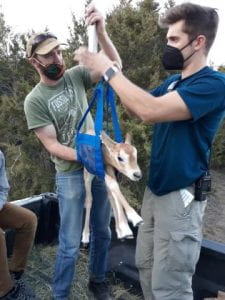
Dr. Dvornicky-Raymond is still charting the course he wants to follow when his time at Fossil Rim ends, but for him the uncertain, ever-evolving nature of conservation is part of what makes the work so special. While he is partial to umbrella and keystone species and is particularly drawn to his favorite animal, the tiger, he is thrilled by the countless ways to help save wild places and species. “There is so much to understand, to learn, and to try. I have the veterinary medicine part down, but that is not the end-all-be-all when it comes to saving animals. Conservation is about people. And so that’s the aspect of One Health that I haven’t spent as much time with. I’ve got a pretty good handle on one-third of it, but there’s two-thirds left and I want to be able to work with a transdisciplinary team and continue to grow. I don’t know where I’m going to be in a year and that makes me nervous, but I know where I want to be. And as long as I keep my eye on the North Star, I think it will be okay. This world is changing very rapidly and people are starting to pay attention to One Health and the health of our ecosystems, so I’m hopeful that that translates into a need. You can only remain hopeful, and I encourage you to stay hopeful.”
While the years since his graduation have been action-packed, it wasn’t long ago that Dr. Dvornicky-Raymond was in our shoes, and he is eager to share his advice for current vet students. First, keep an open mind. “Being a traditional zoo vet at a zoo is one pathway. There are so many different ways that you can have an impact on the natural world and on wildlife conservation that are not just being a zoo vet. So do not be discouraged by people that say there are no jobs in zoological medicine. Those people have a very narrow sight. They’re not thinking big enough.” The current state of the world, he says, calls for novel solutions to problems, and he believes that there is a place for everyone and their unique talents in this sphere. “Don’t feel like you have to go all-or-nothing, as long as you’re doing something. If you care about it, find some way to get involved.” For his parting advice, he’s willing to veer into sentimental territory. “Follow your heart. I know I sound like a Disney character right now. You’re going to hear a lot of naysayers and you’re going to encounter a lot of challenges, but remember that at the end of these challenges is a life of whatever you choose to do. And you have to make sure that you are fulfilled in doing that. There are ways that each person differs that will guide you to where you’re supposed to be. So follow your heart and don’t let people tell you what to do.”
 Colleen Sorge, Class of 2024, is originally from Long Island, NY. She graduated with a B.S. in Animal Science and a minor in English from Cornell University. She often finds herself missing her humanities courses in vet school and is thrilled she can combine her passions for writing and for veterinary medicine as the WildLIFE Blog Editor.
Colleen Sorge, Class of 2024, is originally from Long Island, NY. She graduated with a B.S. in Animal Science and a minor in English from Cornell University. She often finds herself missing her humanities courses in vet school and is thrilled she can combine her passions for writing and for veterinary medicine as the WildLIFE Blog Editor.
 Dr. Matt Marinkovich always had a passion for wildlife but was initially unsure as to what career path might suit him best. “I always knew I wanted to do something with wildlife or something conservation related, but it took a little while to find what that niche was, whether PhD or vet school. I had a couple experiences at SeaWorld San Diego when I was in undergrad and at the National History Museum in Santa Barbara working with the Marine Mammal Stranding Network that led me to really feel like veterinary medicine was the route to go.” After taking 3 gap years, he began his time at Cornell Vet, going on to complete his DVM in 2014.
Dr. Matt Marinkovich always had a passion for wildlife but was initially unsure as to what career path might suit him best. “I always knew I wanted to do something with wildlife or something conservation related, but it took a little while to find what that niche was, whether PhD or vet school. I had a couple experiences at SeaWorld San Diego when I was in undergrad and at the National History Museum in Santa Barbara working with the Marine Mammal Stranding Network that led me to really feel like veterinary medicine was the route to go.” After taking 3 gap years, he began his time at Cornell Vet, going on to complete his DVM in 2014.
Dr. Marinkovich is quick to acknowledge the role that Cornell played in his success, recalling formative moments like an Expanding Horizons experience with the Mountain Gorilla Veterinary Project and praising the faculty he worked with as a student. “You have people there who are really quality professors, but also really quality people and really good mentors. I think I learned a ton from them both from an academic standpoint and also what it means to be a good clinician.” His experiences at Cornell have largely shaped his approach to clinical practice. “There’s still a million things that I don’t know. I’m still surprised every day and challenged every day which is one of the reasons I love wildlife medicine. But in vet school you really develop that approach to cases and that approach to working with others and being part of a team.” Asked what Cornell courses he suggests, Dr. Marinkovich recommends casting a wide net. “The nice part about being a student interested in zoo or wildlife is that everything is applicable. There’s no class and no species that isn’t applicable to your potential future profession. I just tried to soak up as much as I could and be a sponge as much as I could.”
After graduation from vet school, Dr. Marinkovich completed rotating small animal and emergency and critical care specialty internships, both at the Animal Medical Center, before matching with the UC Davis San Diego Zoo Wildlife Alliance Sea World Zoo Residency. After completing his residency in 2019, he began his current position working as a clinical veterinarian at the San Diego Zoo. The work is just as exciting as it sounds! “My dream was to end up at a place like San Diego Zoo, which has a very high-volume clinical case load. We have tons of animals and we provide very high level care to all of the wildlife in our care.” A highlight of the position, he says, is the ability to apply teamwork to particularly challenging cases, as the zoo currently has six veterinarians, a fellow, and a resident. While the medical care of the zoo’s animals takes up the bulk of his time, Dr. Marinkovich also has the opportunity to help support international conservation efforts. “The San Diego Zoo is very involved with Hawaiian forest bird conservation and we have facilities in Maui and the Big Island. I’ve been out there several times to provide medical treatment for the animals in our care out there. I went to Madagascar when I was a resident to help provide emergent medical care to tortoises from a recent confiscation.” Today his favorite cases are usually the ones that demand the most time, facilitating a personal connection. Dr. Marinkovich recalls treating a ring-tailed lemur as a resident and the fulfillment he felt nursing the individual back to health. “That’s an animal that I’ll still go and visit at the zoo years later.” On another occasion, he worked alongside radiologists and human respiratory specialists to diagnose and treat bronchomalacia in an adult male orangutan. “Cases like that where we’re alerted to a problem, we diagnose the source of the problem, and we develop novel ways to fix that problem, especially in a species that is important to us and the greater conservation world are really exciting and really valuable.”
 While well aware that the field of zoological medicine is competitive, Dr. Marinkovich has a refreshing viewpoint. “I think really just focusing on becoming the best vet you can be is the number one step. I think what we look for in terms of a good resident is someone who has a really good foundation in veterinary medicine, and that involves all species. The next time you have to help pull a calf, it may be an exotic bovid rather than a dairy cow.” His perspective, he says, is largely informed by his respect for mental health. “I’m a huge proponent of mental health and being happy with what you’re doing and enjoying each step of the journey. I think you need to take each step and try to get the most out of each experience for what it is. It’s great if zoo residency or working a zoo job works out, but if not, being a vet is an awesome job and you still have that to be fulfilled by. You have to try to not let the quest for that elusive zoo resident position to be the end all and be all of what it means to be fulfilled in this field. Developing your skill sets, really focusing on your own mental health, and who you are as a vet and as a person is going to set you up for success.”
While well aware that the field of zoological medicine is competitive, Dr. Marinkovich has a refreshing viewpoint. “I think really just focusing on becoming the best vet you can be is the number one step. I think what we look for in terms of a good resident is someone who has a really good foundation in veterinary medicine, and that involves all species. The next time you have to help pull a calf, it may be an exotic bovid rather than a dairy cow.” His perspective, he says, is largely informed by his respect for mental health. “I’m a huge proponent of mental health and being happy with what you’re doing and enjoying each step of the journey. I think you need to take each step and try to get the most out of each experience for what it is. It’s great if zoo residency or working a zoo job works out, but if not, being a vet is an awesome job and you still have that to be fulfilled by. You have to try to not let the quest for that elusive zoo resident position to be the end all and be all of what it means to be fulfilled in this field. Developing your skill sets, really focusing on your own mental health, and who you are as a vet and as a person is going to set you up for success.”
Regardless of one’s exact career trajectory, Dr. Marinkovich emphasizes the abundant opportunities to contribute to conservation and the health of wildlife species. “There are so many really interesting and fulfilling ways to be a veterinarian involved with wildlife and conservation. A lot of those opportunities may not have all been fully explored or fleshed out yet, so the sky’s the limit if you are passionate about something. I think our field will be better off because of that. There is an increasing need for people who have a skill set and a passion for the world around them and the wildlife that’s in it. It is a daunting time for people who are passionate about wildlife, but there are a lot of opportunities to find your niche and the way that you are going to make your mark.”
 Colleen Sorge, Class of 2024, is originally from Long Island, NY. She graduated with a B.S. in Animal Science and a minor in English from Cornell University. She often finds herself missing her humanities courses in vet school and is thrilled she can combine her passions for writing and for veterinary medicine as the WildLIFE Blog Editor.
Colleen Sorge, Class of 2024, is originally from Long Island, NY. She graduated with a B.S. in Animal Science and a minor in English from Cornell University. She often finds herself missing her humanities courses in vet school and is thrilled she can combine her passions for writing and for veterinary medicine as the WildLIFE Blog Editor.
Several weeks ago my Block III tutor group was abuzz with the news that our tutor, Dr. Robin Radcliffe, and his colleagues had been honored with the 2021 Ig Nobel Prize in recognition of their work evaluating the efficacy of transporting rhinoceroses by hanging them upside down from helicopters. The prize, awarded every year since 1991, aims to “honor achievements that first make people laugh, and then make them think.” To those of us in the tutor group interested in conservation and wildlife medicine, it was a welcome reminder that we are surrounded by faculty at Cornell who have done what can sometimes feel like the impossible: forged a career in the world of zoo and wildlife medicine. Charged with renewed inspiration, I reached out to Dr. Radcliffe in the hopes of learning more about his career trajectory and his current work.

Dr. Radcliffe obtained his veterinary degree from the University of Minnesota alongside his twin brother & fellow Cornell faculty member, Dr. Rolfe Radcliffe. Says Dr. Radcliffe, “We went from kindergarten through vet school together.” While a vet student Dr. Radcliffe pursued wildlife-centric externships and experiences, though he is quick to note, “I was a little bit disheartened by vet school because there weren’t as many opportunities as there are now in wildlife.” After obtaining his DVM, Dr. Radcliffe worked in a mixed animal practice and then spent a year working exclusively with camelids before returning to Fossil Rim Wildlife Center, where he had been an extern, to work as an associate veterinarian. He later took over as Director of Animal Health. While at Fossil Rim, Dr. Radcliffe completed the requirements for board certification in the American College of Zoological Medicine through the experiential track. Of his somewhat unconventional route to board certification he says, “I preferred the experiential pathway because I wasn’t interested in a zoological position. I knew I wanted to work with field conservation and free-ranging wildlife populations, and even now there’s only one approved wildlife health residency. There’s probably going to be more coming, but when I went to school there were no approved wildlife residencies so it was harder then.” He spent about a decade at Fossil Rim Wildlife Center working largely with rhinoceroses before moving to the International Rhino Foundation and eventually, to Cornell. At Cornell, Dr. Radcliffe teaches, conducts ongoing research into a wide variety of endangered species, and has developed training programs, most significantly, the Engaged Cornell Program.
The diversity of his work is part of what appeals to him, according to Dr. Radcliffe, though in recent years he has been taking on more projects close to home. “I’ve spent a good part of my career traveling all over the world which was great—I loved it—but I’m also very interested in making sure that we conserve and protect the wildlife right here at home. I think that’s important. If you’re going to do international work, I think it’s essential that you address or at least have some experience with conservation in your own part of the world because so much of it is communities and people.” While he has tremendously enjoyed the opportunities that his job has afforded, he notes, “Most people think that it’s so glamorous to be a wildlife veterinarian, and it can be, but there’s so much work that goes into a successful partnership and a field project that people don’t necessarily recognize up front. I do spend a lot of time on that, on communication with partners, grant writing, and helping to sustain the projects that I am invested in.” Another fundamental part of successful projects abroad, according to Dr. Radcliffe, is a commitment to maintaining relationships with research partners. “I think for me, the most important thing is curiosity, and not just scientific curiosity, but curiosity about the place you’re going and the environment, the people, the language, the culture. You should go into a place prepared to learn the language and appreciate the culture. For me, a long term partnership is one in which I come away with it feeling like I have friendships and long term relationships there. I can communicate with my colleagues any time, day or night. They will help me in a pinch and I’ll do anything for them. It’s also little things, like when we publish anything, we always include the local authors and, more often than not, the local authors are lead authors on the publication.”
 For students looking to enter the increasingly competitive field, Dr. Radcliffe’s first suggestion is to capitalize on the opportunities we have here at Cornell Vet. “I think there’s a lot of expertise here at Cornell and there’s a lot of opportunities.” These include Engaged Cornell, Expanding Horizons, and a myriad of courses aimed at students interested in pursuing careers in zoo, wildlife, and exotics medicine. Dr. Radcliffe teaches a 3-part course called Conservation with Communities for One Health, which reflects the multi-disciplinary mindset crucial to effective conservation work. Both undergraduate and veterinary students are able to take this course, and a subset of them travel in teams to field sites in the Congo, Uganda, and Indonesia to participate in projects with institutions that Dr. Radcliffe has built relationships with over the years, including the Jane Goodall Institute and WWF-Indonesia. Coursework aside, Dr. Radcliffe encourages students to take advantage of networking opportunities and to pursue externships that excite them.
For students looking to enter the increasingly competitive field, Dr. Radcliffe’s first suggestion is to capitalize on the opportunities we have here at Cornell Vet. “I think there’s a lot of expertise here at Cornell and there’s a lot of opportunities.” These include Engaged Cornell, Expanding Horizons, and a myriad of courses aimed at students interested in pursuing careers in zoo, wildlife, and exotics medicine. Dr. Radcliffe teaches a 3-part course called Conservation with Communities for One Health, which reflects the multi-disciplinary mindset crucial to effective conservation work. Both undergraduate and veterinary students are able to take this course, and a subset of them travel in teams to field sites in the Congo, Uganda, and Indonesia to participate in projects with institutions that Dr. Radcliffe has built relationships with over the years, including the Jane Goodall Institute and WWF-Indonesia. Coursework aside, Dr. Radcliffe encourages students to take advantage of networking opportunities and to pursue externships that excite them.
Between training the next generation of wildlife veterinarians and working to save endangered species, Dr. Radcliffe has a full plate to say the least. Amid the challenges his work presents he remains optimistic, citing a recent experience in Alaska working with gyrfalcon. “Their attitude in Alaska is let’s save the gyrfalcon and the Arctic ecosystem before everything’s gone. My message for future wildlife students is this: let’s be proactive and use our resources the best we can because it’s very expensive to recover endangered species, it’s very expensive to do so in a zoo in a captive setting. The Alaskan attitude, which I love, is let’s take care of our species before they become endangered!” In the case of already endangered species like Javan and Sumatran rhinos, there are tremendous obstacles to overcome. Still, Dr. Radcliffe feels his most impactful work may be done in mentoring colleagues and training students. “That’s the kind of impact that I feel is the most important that I can make in the long term.”
 Colleen Sorge, Class of 2024, is originally from Long Island, NY. She graduated with a B.S. in Animal Science and a minor in English from Cornell University. She often finds herself missing her humanities courses in vet school and is thrilled she can combine her passions for writing and for veterinary medicine as the WildLIFE Blog Editor.
Colleen Sorge, Class of 2024, is originally from Long Island, NY. She graduated with a B.S. in Animal Science and a minor in English from Cornell University. She often finds herself missing her humanities courses in vet school and is thrilled she can combine her passions for writing and for veterinary medicine as the WildLIFE Blog Editor.